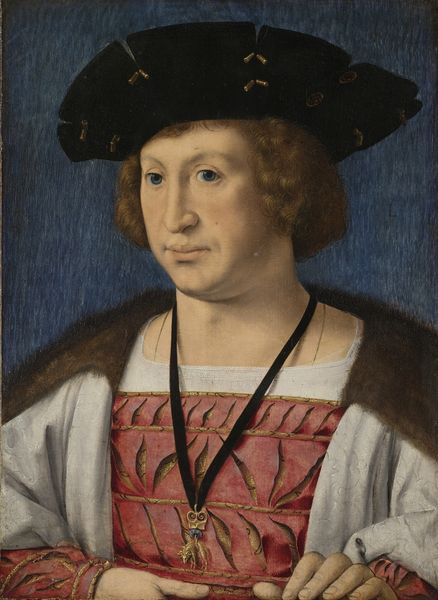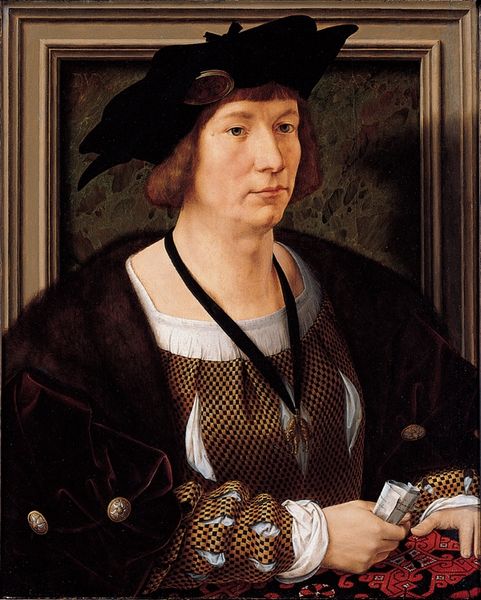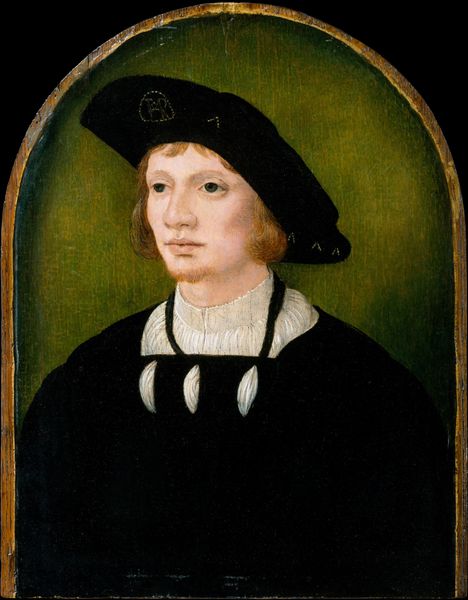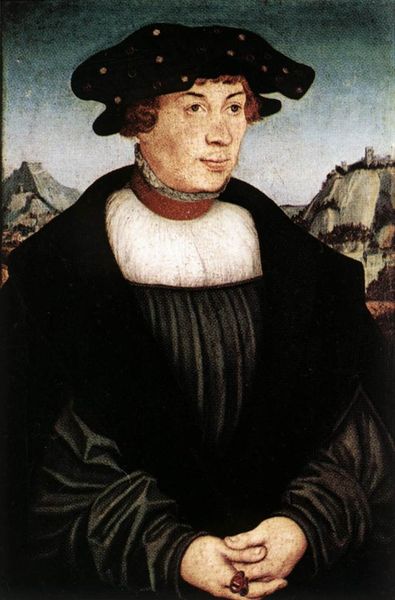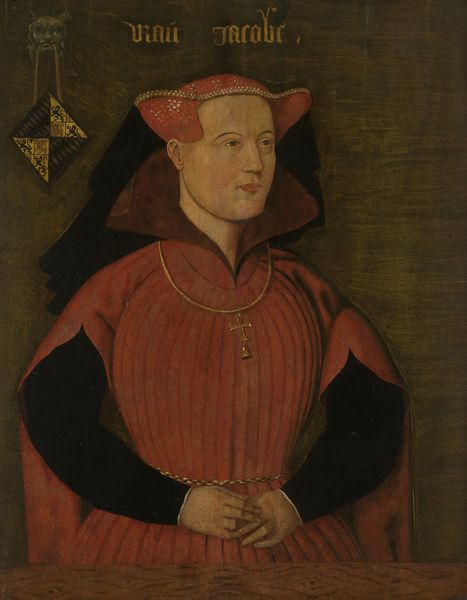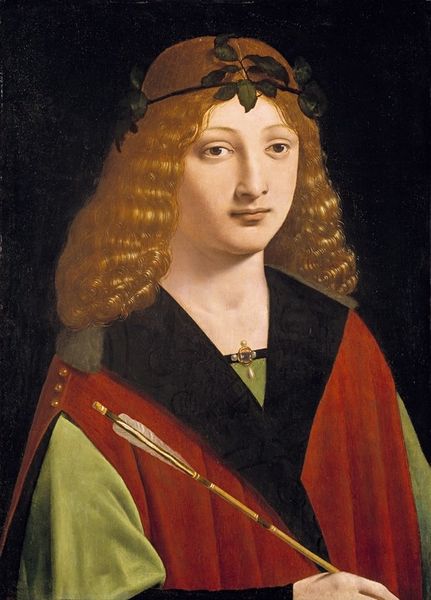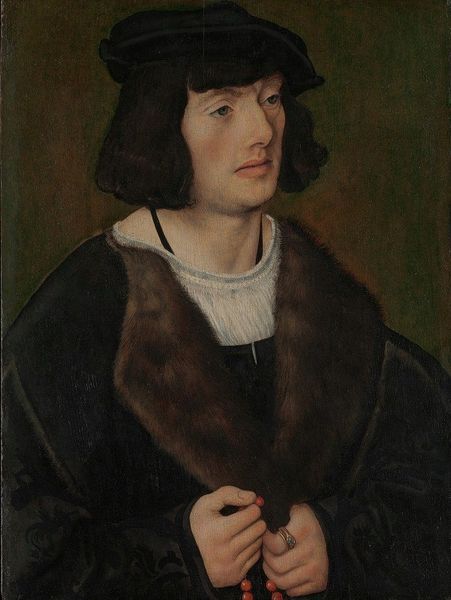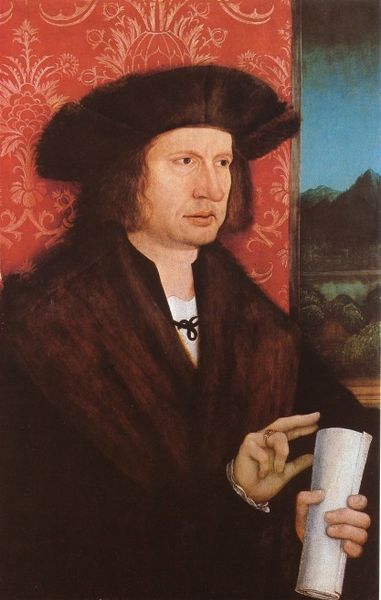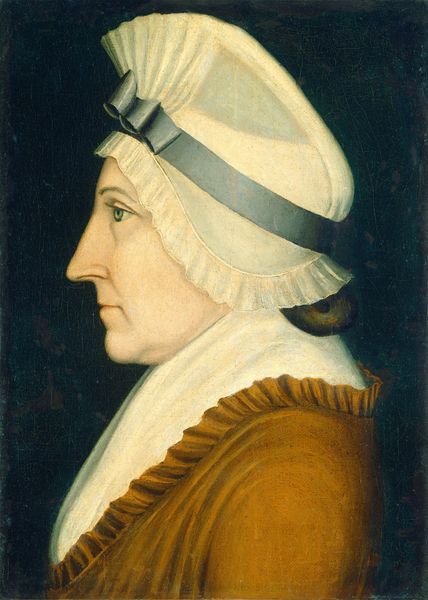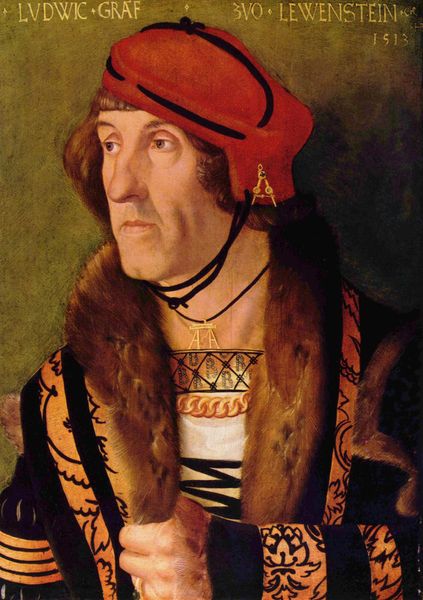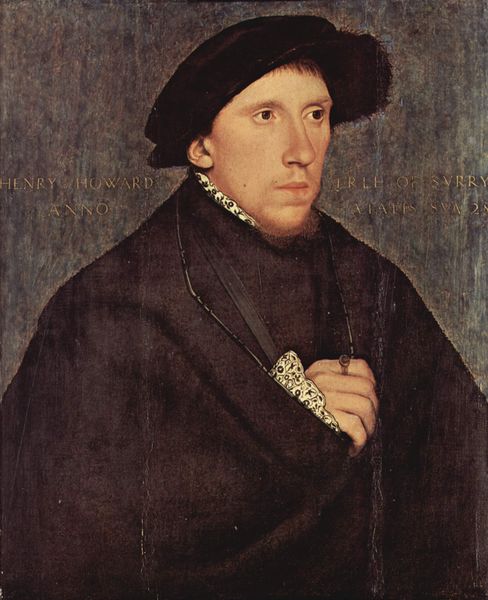
painting, oil-paint
#
portrait
#
painting
#
oil-paint
#
11_renaissance
#
oil painting
#
history-painting
#
italian-renaissance
Dimensions: 52 x 38 cm
Copyright: Public domain
Curator: Here we have Hans Holbein the Younger's 1517 oil on panel, a "Portrait of Benedikt von Hertenstein." Editor: My initial response is dominated by the man’s apparel: a luscious, almost exaggerated sleeve draws attention to the power held in his hand as it holds a signet ring. It speaks volumes about status and the material world. Curator: Absolutely. The choice of fabrics, the tailoring – they are critical markers. But consider also the backdrop, the sculpted frieze. It alludes to a classical education, situating him within a broader context of humanist ideals that privilege civic virtue and historical awareness. Editor: Right, and the choice of the frieze, perhaps even commissioned with his family's heraldry on it—these objects reflect his family's history, resources, and identity that have been consciously displayed. Do you agree? Curator: It suggests that at the age indicated in the painting - purportedly 22 - Benedikt occupies a pre-determined place in society based on his lineage, wealth and influence. Holbein is meticulously representing the structures that afford him power and visibility, structures often historically out of reach for many. Editor: The fact that Holbein highlights these signs so effectively using materials as tools makes me appreciate how the image has become one big show about production. Everything we are allowed to observe about his wealth came about with somebody producing or handling the goods—the garments, the pigment used, the rings, the backdrop and the labor it all required. Curator: Indeed, what you highlight resonates perfectly with art historical research delving into class dynamics and how portraiture as a genre reflects and reinforces these structures. Ultimately the portrait presents questions about its legacy in terms of contemporary identity formation. Editor: Yes. For me, engaging with the artwork underscores the role of craftsmanship in not just creating images but preserving class status and societal privilege. A reminder of the tangible roots of power. Curator: Well said; seeing how different lenses enhance one's insight, it is nice how this analysis of labor highlights these portraits, while situating artworks inside complex frameworks, allows a nuanced understanding of intersectionality and identity within these historic portraits. Editor: Likewise, I appreciate that, by thinking critically about class, we understand the need for ongoing social dialogues to dismantle such systems and elevate marginalized voices within these frames, allowing each unique narrative within its frame to flourish in solidarity.
Comments
No comments
Be the first to comment and join the conversation on the ultimate creative platform.
